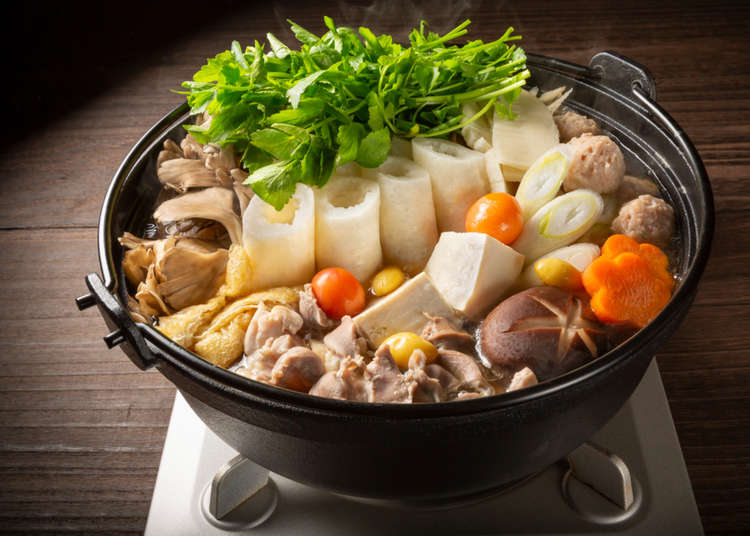
With Japan's winter a season of cold, dry weather with much of the nation experiencing snowfall, it's the perfect time for sipping hot sake, relaxing in an outdoor hot spring and chowing down on a variety of special dishes!
When the days grow chilly, it's time to get inside and try these 8 Japanese winter comfort foods to help warm you up!
1. Nabe
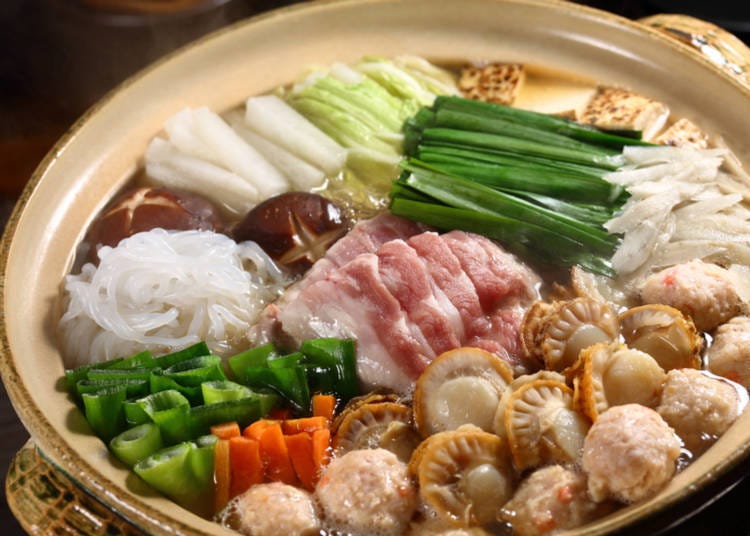
A style of cooking you wouldn't likely see alongside ramen and sushi restaurants, nabe is a traditional Japanese hot pot dish of broth, vegetables, and meat or seafood cooked together, usually in an earthenware vessel. A classic Japanese comfort food, it has been eaten in Japan for as long as earthenware cookware has existed. While it is typically cooked and eaten together with family and friends at home, nabe can usually be ordered at izakayas in wintertime.
A number of different types of nabe can be found around Japan, each of which use different regional ingredients and broth base. Some famous varieties include the generic tori nabe (with a savory chicken broth), kani nabe (crab hot pot), which is often eaten in the winter, and the hearty, protein-packed chanko nabe eaten by sumo wrestlers.
2. Yudofu
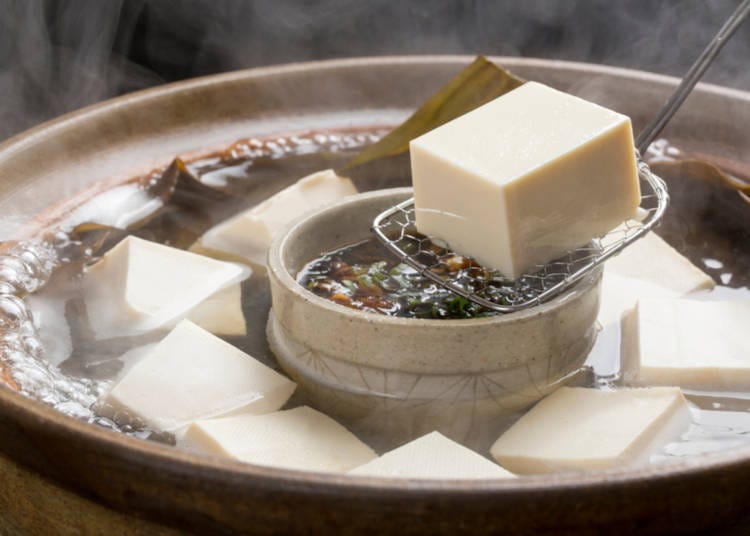
In Japan, tofu is not eaten as a health food - it's included in a variety of dishes. One variety, called yudofu, is a simple dish of silken tofu gently simmered in kombu-flavored dashi broth. The soft, cooked tofu is eaten with condiments such as sliced green onion, soy sauce and freshly grated wasabi, or tangy ponzu citrus dressing.
Originating in Kyoto, where it was traditionally enjoyed by Buddhist monks as part of their vegan cuisine called shojin-ryori, yudofu's simplicity demands only the freshest tofu so that the sweet, creamy flavor of high-quality soybeans stands out.
3. Yakiimo
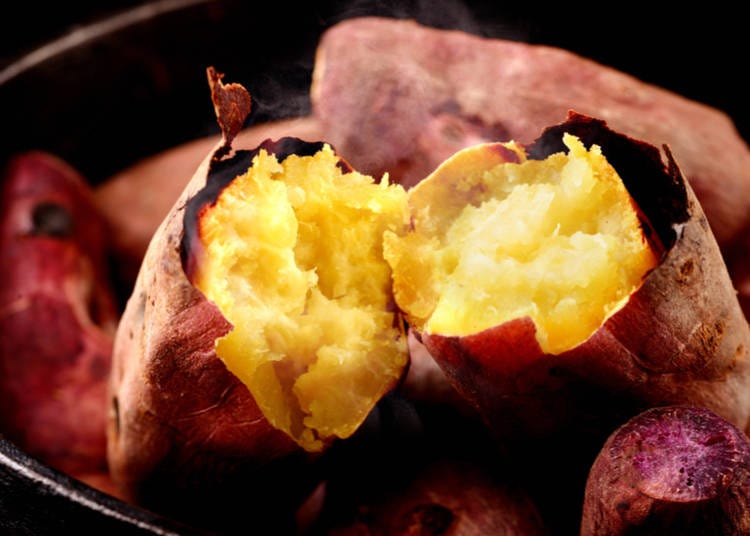
A common sight during winter in Japan, yakiimo, or roasted sweet potato, have a reddish skin and golden inside, and are roasted slowly at low temperatures until the center becomes tender. They are typically sold in front of grocery shops and by street vendors who drive around town, roasting them in the back of their truck.
4. Sukiyaki
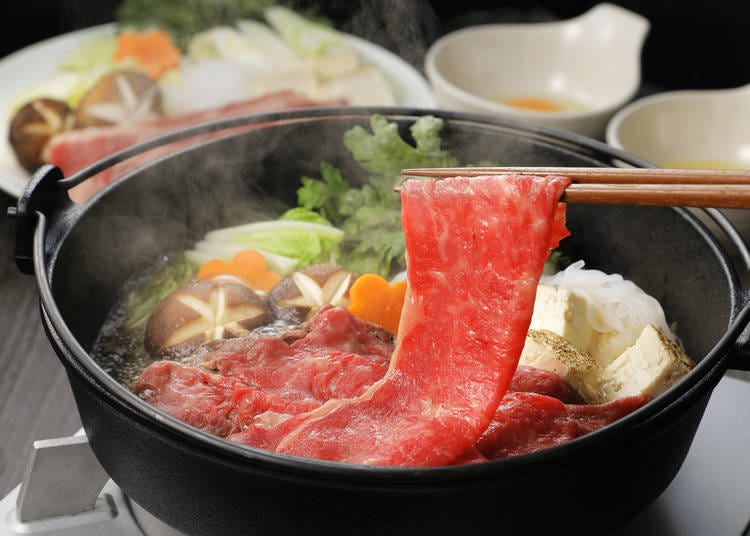
A winter favorite - though still eaten throughout the year since it's so delicious - sukiyaki is a hot pot dish made with a sweet soy sauce broth into which tender slices of beef and vegetables are simmered. Often the dish will include grilled tofu, shiitake mushrooms and sliced Welsh onions, making for an extremely savory flavor. The cooked beef and other ingredients are dipped into beaten raw egg yolks as they are eaten, creating a sweet creamy sauce.
5. Shabu-Shabu
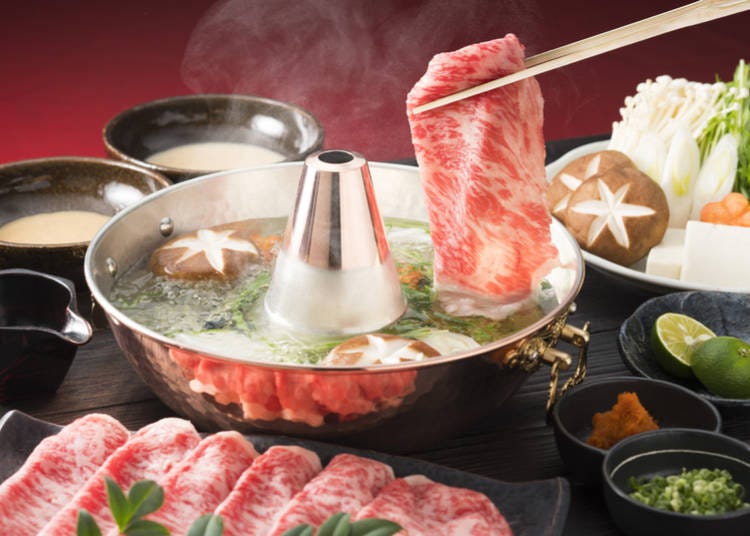
Another style of Japanese hot pot that's popular in the winter months, shabu-shabu gains its name from the Japanese meaning for "swish, swish." For this dish, a simple broth is made using hot water and kombu seaweed, into which different kinds of vegetables (such as sliced onions, carrots and mushrooms) are simmered to add flavor. Unlike other kinds of nabe where all ingredients are cooked together, the novelty of shabu-shabu is taking individual slices of thinly shaved pork and lightly swishing them with chopsticks in the broth before eating. The cooked ingredients are then dipped into creamy sesame sauce or ponzu citrus sauce and eaten.
6. Okayu
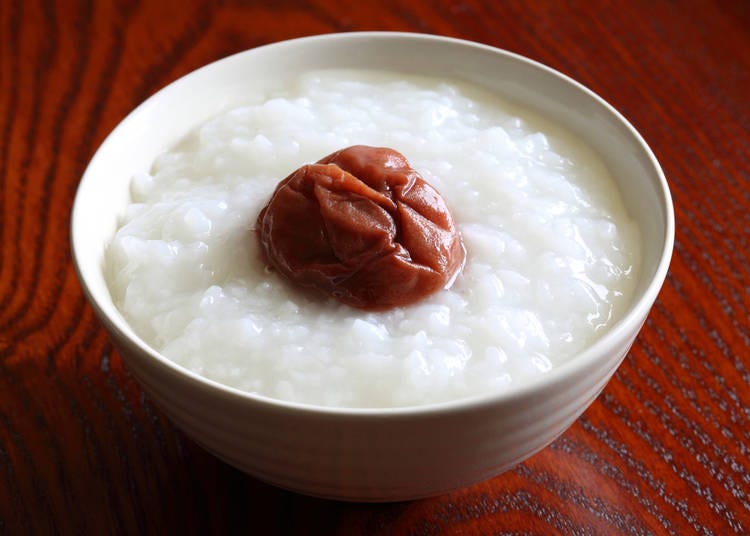
Okayu and zosui are two types of hearty Japanese porridge simply made with rice and water or broth. For making okayu, the ratio of water for cooking rice is increased until it becomes a thick runny soup. Chopped negi onion, soy sauce, and pickled umeboshi plum can be added to garnish the porridge and add a certain tartness prior to serving.
Zosui is a similar dish made from the leftovers of a Japanese hot pot. Once the hot pot's main ingredients have been eaten, cooked rice and beaten egg are added to make a porridge mixed with the rich flavors from the nabe broth. Both are popular winter dishes throughout Japan.
7. Oden
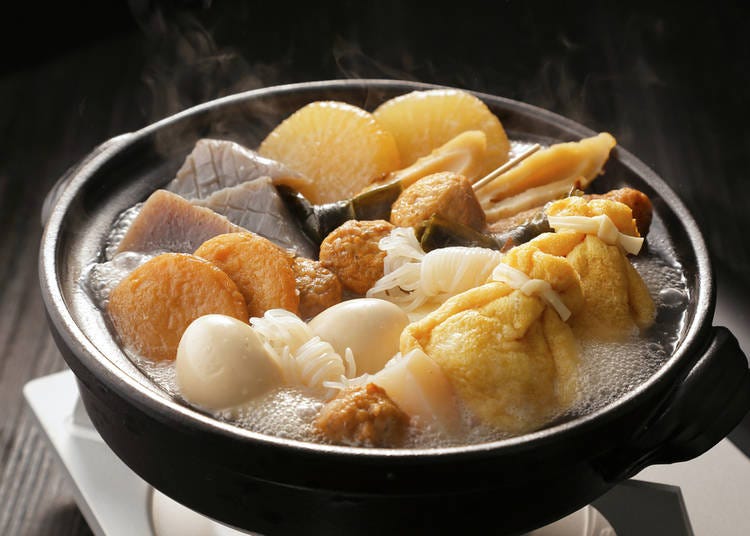
As soon as the weather starts turning cold, oden starts appearing virtually everywhere - in convenience stores, supermarkets, to yatai street food stands and even izakayas. Oden is a single-pot dish made with a variety of savory ingredients simmered at length in a soy sauce and kelp dashi broth. Common ingredients include thick cuts of daikon radish, eggs, chikuwa fish cakes and <@konnyaku|@> yam. Although the scent of the dish tends to be lightly fishy, its flavorful taste is quickly addictive especially during winter's cold nights.
8. Nikujaga
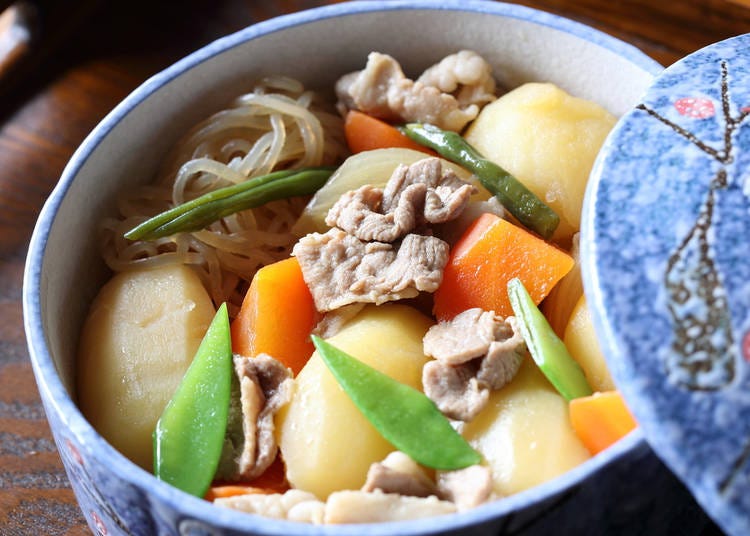
Originally created in the 1800s in the style of Western beef stews, nikujaga is a type of Japanese comfort food enjoyed by all. Literally meaning "meat and potatoes", nikujaga is exactly that: potatoes, carrots, onion and meat slow-cooked in a mixture of water, sake, dashi and soy sauce. In Japan's Kansai region, beef is typically used in the recipe, while pork is used in the Kanto region.
Enjoying Japan's winter season
Food, drink and seasons go hand in hand in Japan, so it's no surprise that in winter people enjoy steaming, savory hot pots, delicious rice dishes and meat, often taking time to eat while enjoying a sip or few of hot sake. After spending a day out in the cold, nothing beats coming inside to a hot, heart meal! Be sure to try one of these foods when visiting Japan in winter!
- Category
*Prices and options mentioned are subject to change.
*Unless stated otherwise, all prices include tax.
Limited time offer: 10% discount coupons available now!
Recommended places for you
-

UDONNISHIMURA
Other Japanese Food
Shinsekai, Tennouji, Tsuruhashi
-
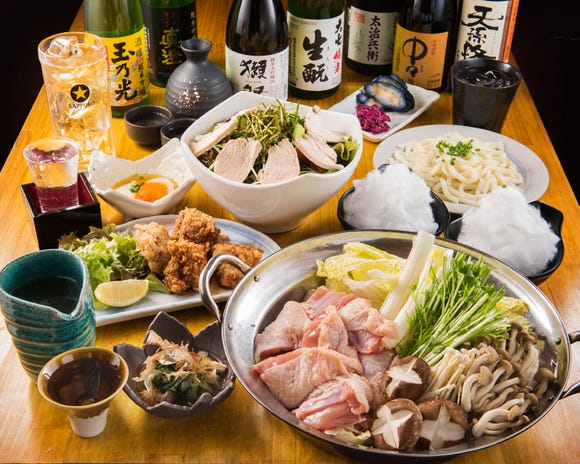
Wasui Yaesuten
Other Japanese Food
Tokyo Station
-

Momotaro Uenoten
Other Japanese Food
Ueno
-
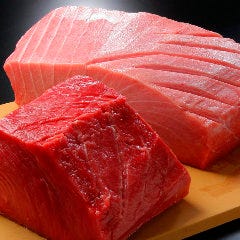
Kamesushi Sohonten
Sushi
Umeda, Osaka Station, Kitashinchi
-

Jiraiya
Other Japanese Food
Sendai And Matsushima
-

SUN Osakaten
Other Japanese Food
Umeda, Osaka Station, Kitashinchi
-

15 Must-Try Restaurants in Ikebukuro: From Aged Yakiniku to All-You-Can-Eat Sushi, Plus Adorable Animal Cafés
-

Where to Eat in Yokohama: 10 Must-Try Restaurants for Yakiniku, Izakayas, Unique Dining & More
-

Step Into the Story: Inside Immersive Fort Tokyo
-

Where to Eat in Shibuya: 14 Must-Try Restaurants for Yakiniku, Sushi, Izakayas, Cafes and More
-

15 Must-Try Sushi Restaurants in Tokyo (+5 Trending Areas to Explore for Foodies)
-

12 Unique & Fun Tokyo Food Tours to Enjoy in 2024
-

Nara Food Guide: 9 Absolutely Must-Try Foods When Visiting Nara
-

Spending Wonderful Time Alone in Shibuya - Free Cosmetics and a Hundred-Yen Bus!
-

Top 5 Things to Do in Hokkaido's Biei and Furano Area: Shirogane Blue Pond, Lavender Fields, And More!
-

Tokyo Roppongi: 5 Most Amazing Spots at Roppongi Hills and How to Make the Best of Them!
-

11 Japanese Regional Food Souvenirs You Have To Try!
-
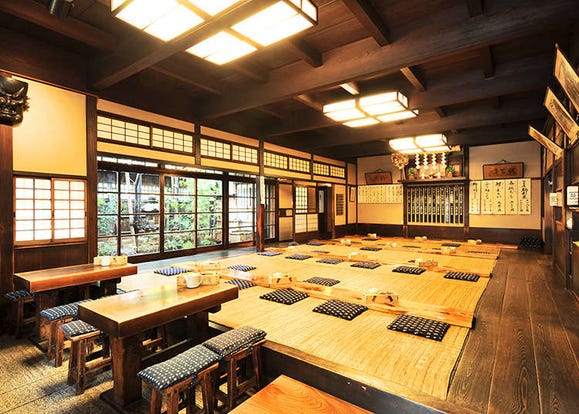
Traditional Japanese cuisine in Tokyo
- #best sushi japan
- #what to do in odaiba
- #what to bring to japan
- #new years in tokyo
- #best ramen japan
- #what to buy in ameyoko
- #japanese nail trends
- #things to do japan
- #onsen tattoo friendly tokyo
- #daiso
- #best coffee japan
- #best japanese soft drinks
- #best yakiniku japan
- #japanese fashion culture
- #japanese convenience store snacks













